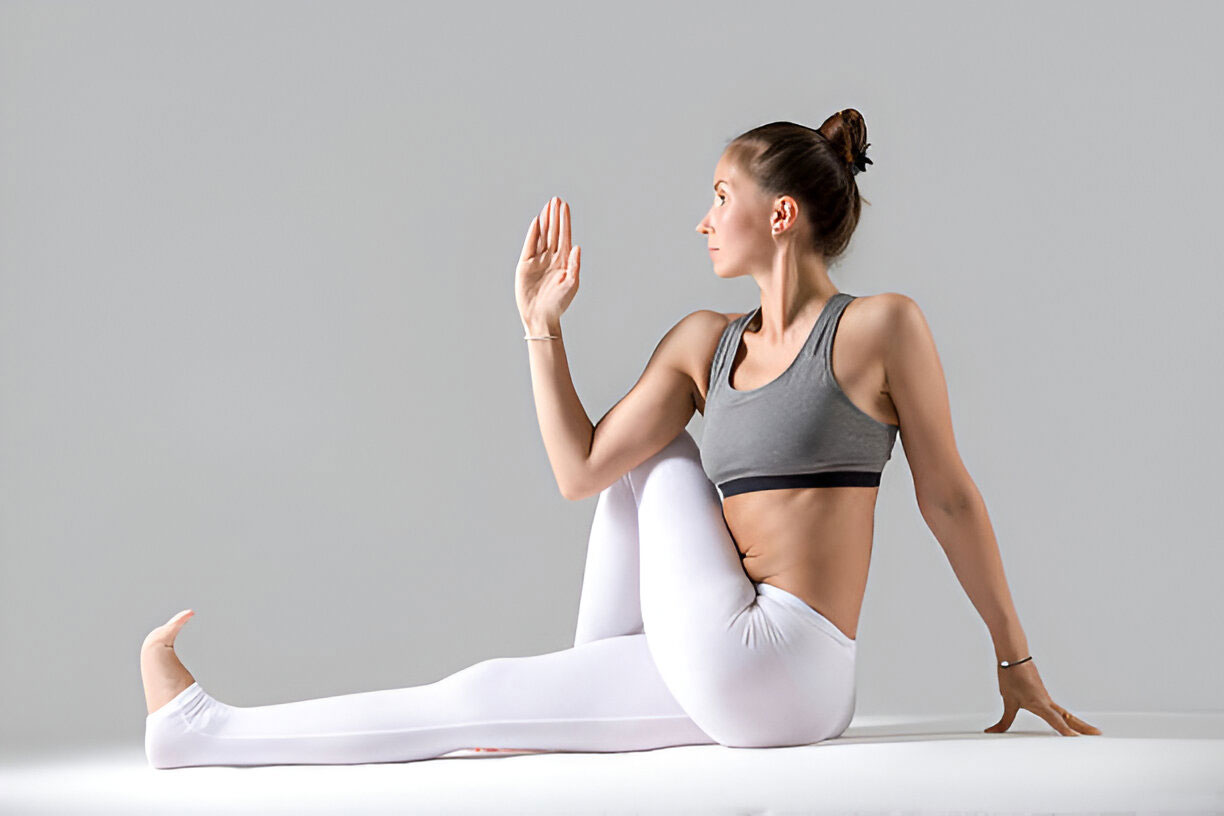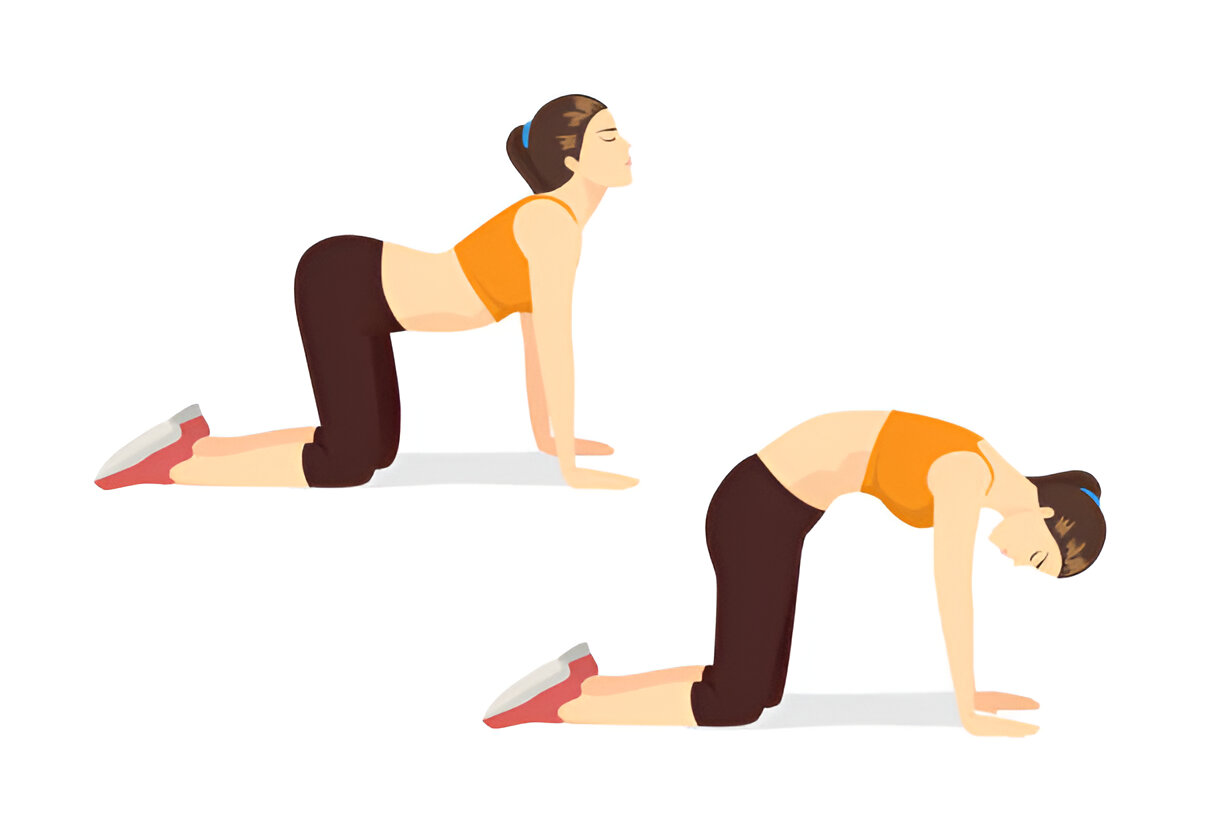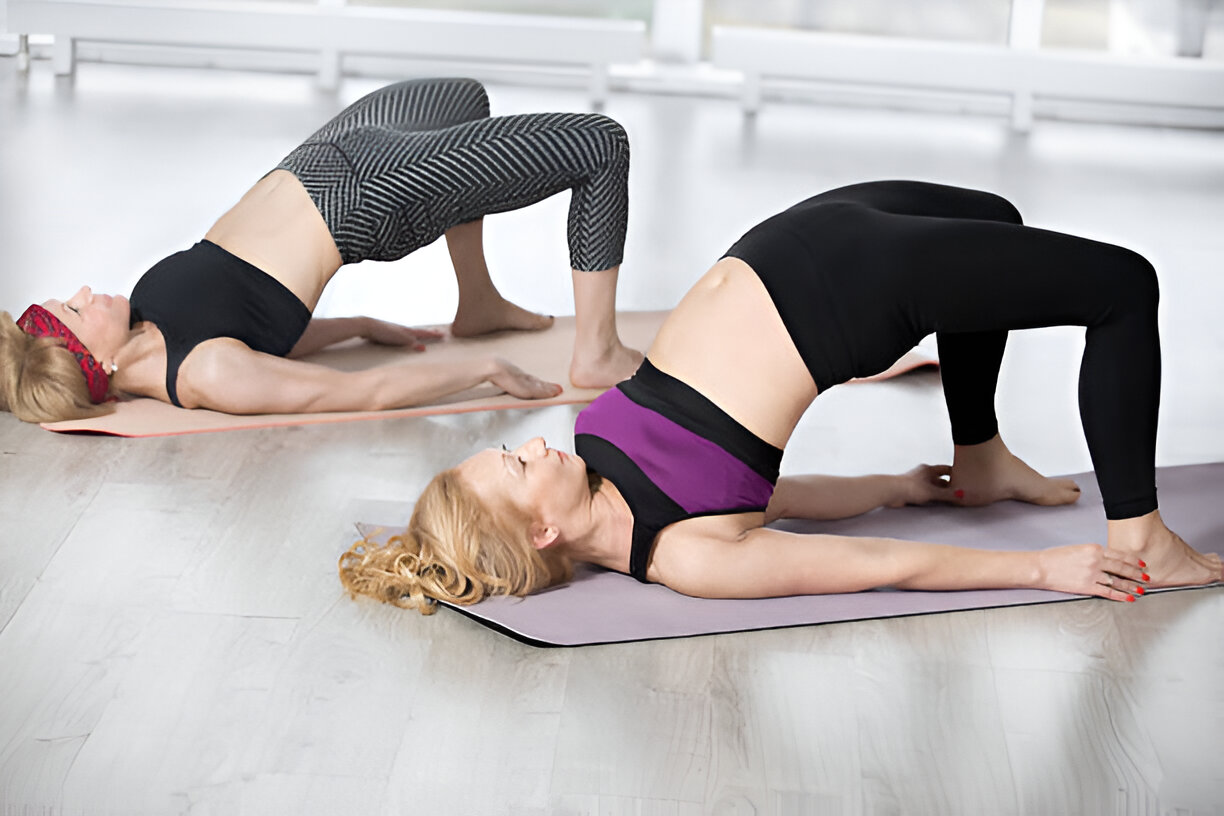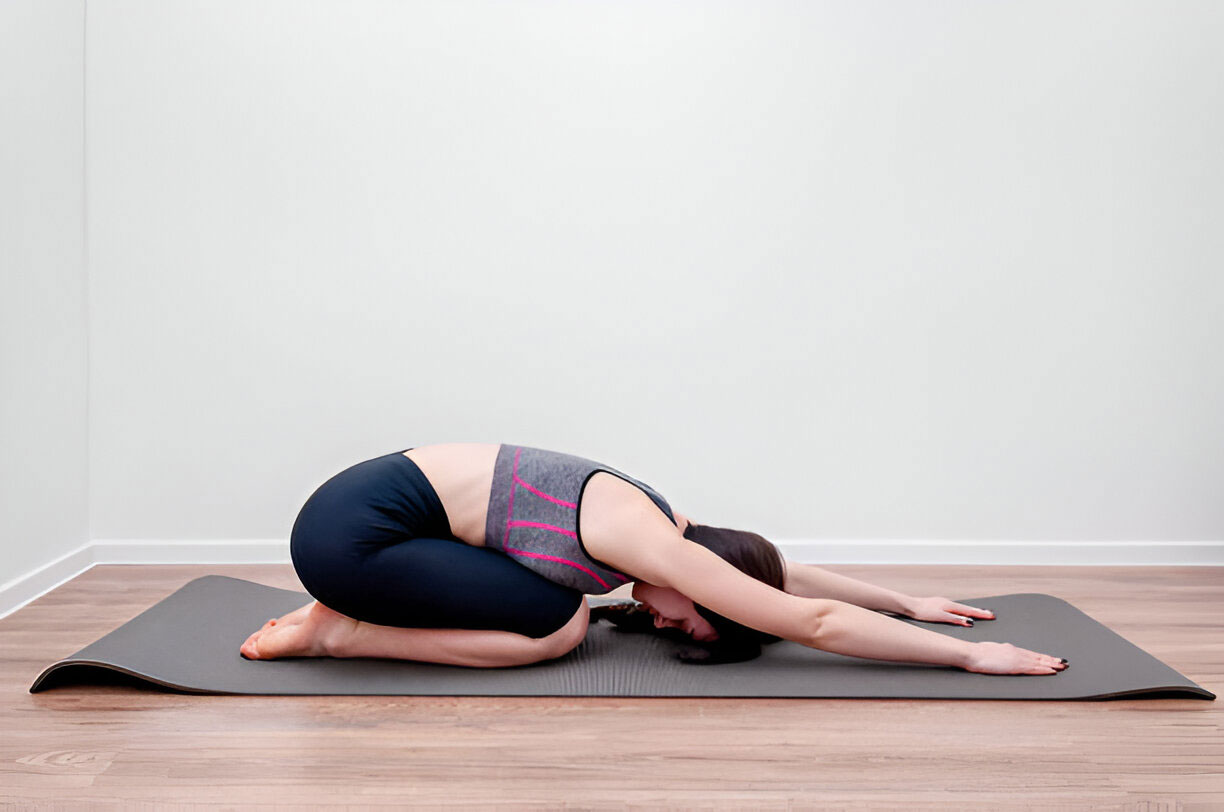Introduction
Digestive health is crucial for overall well-being, affecting not only the body’s ability to absorb nutrients but also energy levels, mood, and immune function. Constipation, bloating, and poor digestion are common issues many people face due to stress, unhealthy eating habits, and a sedentary lifestyle. While medications and dietary changes can help, the natural and holistic approach offered by yoga can be even more effective in promoting better digestion and alleviating constipation.
Yoga integrates physical postures (asanas), breathing techniques (pranayama), and mindfulness to create a balanced and healthy digestive system. Certain yoga poses specifically target the abdominal area, massaging internal organs, stimulating blood flow, and encouraging peristalsis (the wave-like muscle contractions that move food through the digestive tract). These benefits make yoga an ideal, low-impact exercise for improving gut health and relieving constipation.
This comprehensive guide explores various yoga poses that can aid digestion and help relieve constipation. You’ll learn about the specific benefits of each pose, how to perform them correctly, and additional tips to enhance their effectiveness. By incorporating these poses into your daily routine, you can support your digestive system naturally and enjoy better gut health.

Understanding the Link Between Yoga and Digestion
Yoga offers a unique approach to improving digestive health by addressing both the physical and mental aspects of well-being. Here’s how yoga supports digestion:
- Stimulates Blood Flow to Digestive Organs: Many yoga poses involve twists, bends, and stretches that enhance circulation to the abdominal region. This increased blood flow nourishes the digestive organs and promotes more efficient digestion.
- Enhances Gut Motility: Certain poses stimulate peristalsis, the muscle contractions that move food along the digestive tract. This is particularly helpful for relieving constipation and promoting regular bowel movements.
- Reduces Stress: Stress is a significant factor contributing to digestive issues like irritable bowel syndrome (IBS), acid reflux, and constipation. Yoga encourages relaxation and mindfulness, which helps activate the parasympathetic nervous system—the “rest and digest” system.
- Encourages Detoxification: The twisting and compressing motions of some yoga poses help stimulate the liver and kidneys, promoting the elimination of toxins from the body.
- Balances the Digestive Fire (Agni): In Ayurvedic tradition, Agni (digestive fire) is considered essential for health. Weak or imbalanced Agni can lead to indigestion, bloating, and constipation. Yoga poses that focus on the abdominal area help maintain a balanced digestive fire.
Essential Yoga Poses for Digestion and Constipation Relief
1. Pawanmuktasana (Wind-Relieving Pose)
Benefits:
- Relieves gas and bloating
- Stimulates bowel movement
- Eases constipation
How to Perform:
- Lie on your back with your legs extended.
- Inhale and bring your right knee towards your chest.
- Clasp your hands around the shin and press the knee gently into your abdomen.
- Hold the pose for 20-30 seconds while taking deep breaths.
- Release and switch to the left leg.
- For a deeper effect, bring both knees to your chest and hold.
Why It Works:
Pawanmuktasana is one of the most effective poses for releasing trapped gas and stimulating bowel movement. The compression of the abdomen massages the intestines, promoting digestion and easing constipation.
2. Ardha Matsyendrasana (Half Lord of the Fishes Pose)
Benefits:
- Stimulates digestion
- Detoxifies the body
- Improves nutrient absorption
How to Perform:
- Sit on the floor with your legs extended.
- Bend your right knee and place your foot outside your left thigh.
- Place your left elbow on the outside of your right knee, and twist your torso to the right.
- Place your right hand on the floor behind you for support.
- Hold the pose for 30 seconds to 1 minute while breathing deeply, then switch sides.
Why It Works:
This seated twist compresses the digestive organs, promoting detoxification and aiding digestion. It’s particularly beneficial for those experiencing bloating, constipation, or sluggish digestion.
3. Marjaryasana-Bitilasana (Cat-Cow Pose)
Benefits:
- Promotes gut motility
- Relieves constipation
- Reduces bloating
How to Perform:
- Start on your hands and knees in a tabletop position.
- Inhale and arch your back (Cow Pose), lifting your head and tailbone upwards.
- Exhale and round your spine (Cat Pose), drawing your belly button towards your spine.
- Continue flowing between these poses with each breath for 1-2 minutes.
Why It Works:
The gentle flexion and extension of the spine during Cat-Cow pose stimulate the intestines and promote peristalsis, helping food move smoothly through the digestive tract.
4. Setu Bandhasana (Bridge Pose)
Benefits:
- Improves digestion
- Strengthens the core
- Relieves lower back pain associated with constipation
How to Perform:
- Lie on your back with your knees bent and feet flat on the floor.
- Place your arms by your sides with palms facing down.
- Inhale and lift your hips towards the ceiling, pressing your feet into the floor.
- Clasp your hands under your back and roll your shoulders underneath you.
- Hold the pose for 30 seconds to 1 minute, then slowly release.
Why It Works:
Bridge Pose gently compresses the abdominal organs, stimulating digestion and relieving constipation. The pose also strengthens the core muscles, which support healthy digestion.
5. Balasana (Child’s Pose)
Benefits:
- Relieves gas and bloating
- Promotes relaxation and stress relief
- Gently massages the abdominal organs
How to Perform:
- Start on your hands and knees in a tabletop position.
- Bring your big toes together and sit back on your heels.
- Extend your arms forward and rest your forehead on the floor.
- Hold for 1-3 minutes, focusing on deep breathing.
Why It Works:
Child’s Pose is a restorative pose that relaxes the body while gently compressing the abdomen. This compression helps alleviate bloating, gas, and constipation.
6. Supta Matsyendrasana (Supine Twist Pose)
Benefits:
- Stimulates digestion
- Eases constipation
- Relieves lower back pain
How to Perform:
- Lie on your back with your legs extended.
- Bend your right knee and cross it over to the left side of your body, letting it rest on the floor.
- Extend your right arm out to the side and gaze towards your right hand.
- Hold the pose for 1-2 minutes, then switch sides.
Why It Works:
This gentle spinal twist massages the intestines, stimulating digestion and encouraging bowel movement. It’s an excellent pose to relieve constipation and promote detoxification.
7. Vajrasana (Thunderbolt Pose)
Benefits:
- Eases digestion after meals
- Relieves bloating and gas
- Promotes relaxation
How to Perform:
- Kneel on the floor with your knees together and sit back on your heels.
- Rest your hands on your thighs with palms facing down.
- Sit with a straight spine and close your eyes.
- Hold the pose for 5-10 minutes, especially after meals.
Why It Works:
Vajrasana is one of the few yoga poses recommended for practice immediately after eating. It helps improve digestion by directing blood flow to the stomach and intestines and can relieve bloating and gas.
8. Paschimottanasana (Seated Forward Bend)
Benefits:
- Stimulates the digestive organs
- Reduces stress and anxiety
- Promotes bowel movement
How to Perform:
- Sit on the floor with your legs extended straight in front of you.
- Inhale and reach your arms overhead.
- Exhale and fold forward, reaching for your feet or shins.
- Hold the pose for 1-3 minutes, focusing on deep breathing.
Why It Works:
This forward bend compresses the abdominal area, stimulating digestion and promoting bowel movement. It also has a calming effect on the mind, reducing stress—a significant factor in digestive issues.
9. Dhanurasana (Bow Pose)
Benefits:
- Stimulates the digestive system
- Relieves constipation
- Strengthens the abdominal muscles
How to Perform:
- Lie face-down on the mat with your arms by your sides.
- Bend your knees and reach back to grab your ankles.
- Inhale and lift your chest off the floor while simultaneously lifting your legs.
- Hold the pose for 20-30 seconds while focusing on your breath.
Why It Works:
Bow Pose creates a strong stretch in the abdominal region, stimulating the digestive organs and relieving constipation. The pose also strengthens the core, which supports digestive health.
10. Malasana (Garland Pose)
Benefits:
- Opens the hips and groin
- Relieves constipation
- Promotes bowel movement
How to Perform:
- Stand with your feet slightly wider than hip-width apart.
- Squat down, keeping your heels on the floor if possible.
- Bring your palms together in front of your chest, pressing your elbows into your inner knees.
- Hold for 1-3 minutes while taking deep breaths.
Why It Works:
Malasana is a deep squat that encourages the downward flow of energy (apana vayu) and promotes bowel movement. It’s a powerful pose for relieving constipation and improving digestion.
11. Uttanasana (Standing Forward Bend)
Benefits:
- Eases constipation
- Stimulates the liver and kidneys
- Calms the nervous system
How to Perform:
- Stand with your feet hip-width apart.
- Inhale and lengthen your spine.
- Exhale and fold forward from your hips, reaching towards the floor.
- Hold the pose for 1-3 minutes, allowing your head and neck to relax.
Why It Works:
This pose helps increase blood flow to the digestive organs, stimulating digestion and relieving constipation. The inversion also helps calm the nervous system, reducing stress-related digestive issues.
12. Navasana (Boat Pose)
Benefits:
- Strengthens the core
- Stimulates the digestive organs
- Improves gut motility
How to Perform:
- Sit on the floor with your knees bent and feet flat on the floor.
- Lean back slightly and lift your feet off the floor, balancing on your sitting bones.
- Extend your arms forward and straighten your legs to form a “V” shape.
- Hold for 20-30 seconds while maintaining steady breathing.
Why It Works:
Boat Pose strengthens the abdominal muscles, supporting healthy digestion. It also stimulates the digestive organs, helping to relieve constipation.
Tips for Practicing Yoga for Digestion and Constipation
To get the most out of these yoga poses, keep the following tips in mind:
- Practice Regularly: Consistency is key to improving digestion and relieving constipation. Aim to practice yoga for at least 15-30 minutes daily.
- Focus on Deep Breathing: Deep, diaphragmatic breathing is essential for stimulating the parasympathetic nervous system and promoting relaxation, which aids digestion.
- Incorporate Mindfulness: Mindfulness and meditation can help reduce stress—a major factor in digestive issues. Consider integrating these practices into your yoga routine.
- Stay Hydrated: Proper hydration is crucial for healthy digestion and preventing constipation. Drink plenty of water throughout the day, but avoid drinking large amounts immediately before or during your practice.
- Avoid Overstretching: While it’s important to engage the abdominal area during yoga poses, avoid overstretching or pushing yourself too hard. Listen to your body and modify poses as needed.
- Use Props: If you find certain poses challenging, use props like yoga blocks, straps, or bolsters for support. This can help you maintain proper alignment and get the most out of each pose.
Additional Lifestyle Tips for Better Digestion and Constipation Relief
In addition to yoga, adopting healthy lifestyle habits can further enhance digestion and relieve constipation:
- Eat a Fiber-Rich Diet: Include plenty of fruits, vegetables, whole grains, and legumes in your diet to support regular bowel movements.
- Stay Active: Regular physical activity, even outside of your yoga practice, helps keep the digestive system functioning smoothly.
- Manage Stress: Chronic stress can lead to digestive problems. Incorporate relaxation techniques like meditation, deep breathing, and yoga into your daily routine.
- Chew Your Food Thoroughly: Properly chewing your food aids digestion by breaking down food into smaller particles, making it easier for your body to absorb nutrients.
- Establish a Routine: Try to eat meals at regular intervals and go to bed and wake up at the same time each day. A consistent routine supports a healthy digestive system.
- Avoid Overeating: Eating large meals can overwhelm the digestive system and lead to bloating and constipation. Instead, opt for smaller, more frequent meals.
Conclusion
Yoga is a powerful tool for promoting better digestion and relieving constipation naturally. The poses discussed in this article specifically target the abdominal region, helping to stimulate digestion, relieve bloating, and encourage bowel movements. By incorporating these yoga poses into your daily routine, along with adopting healthy lifestyle habits, you can achieve better gut health, reduce discomfort, and enjoy a more balanced and energized life.
Whether you’re a beginner or an experienced yogi, these poses can be easily integrated into your practice. Remember, the key to reaping the benefits is consistency, mindfulness, and listening to your body. With patience and regular practice, you can achieve lasting relief from digestive issues and enjoy improved overall well-being.












